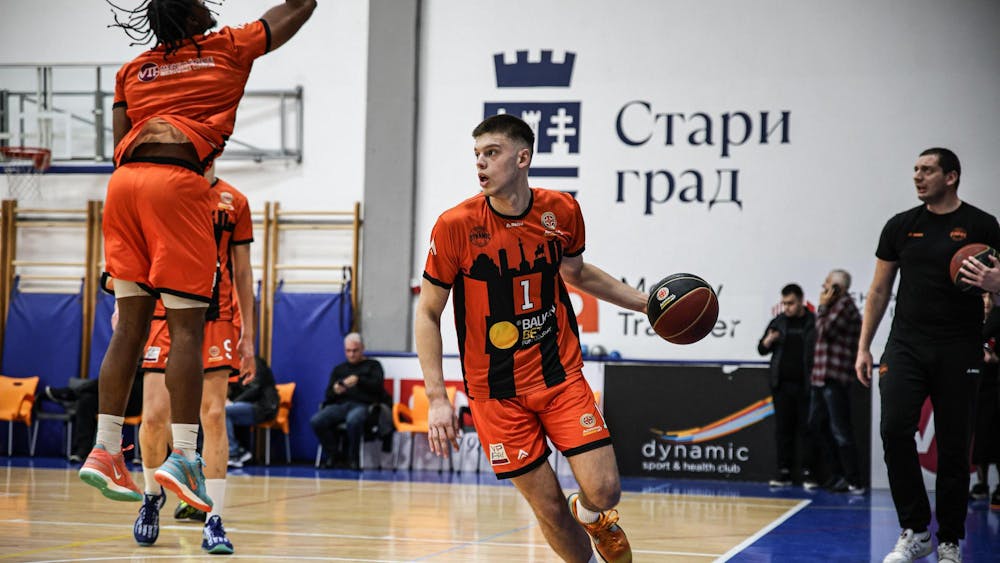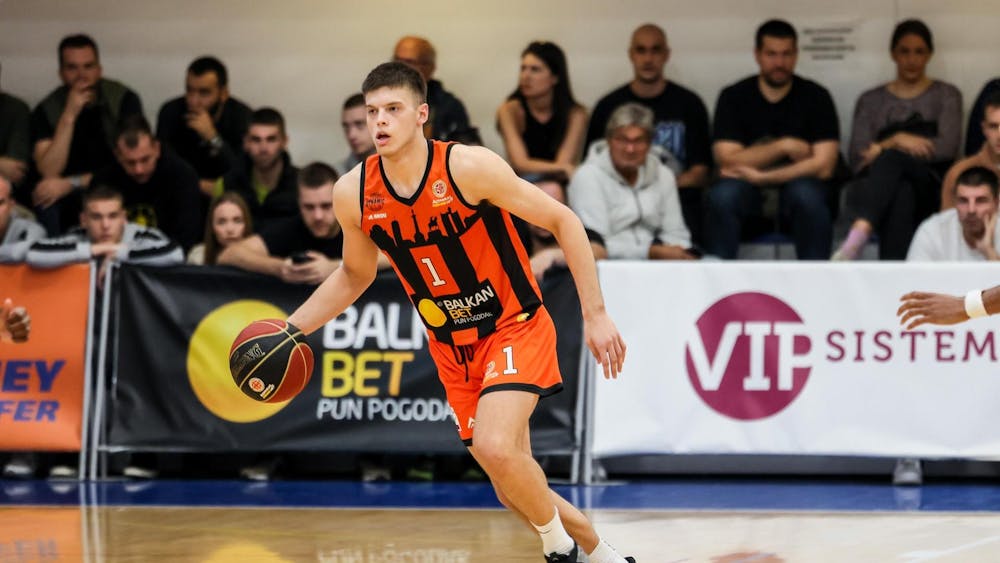Pictures of his family sit on his desk, next to his computer. An album cover of Eric Clapton hangs on the wall behind him, and his desk is occupied with papers and books. This is Dr. Steven Green’s office at Team Green Dentistry, his dental practice, in Fishers, Indiana.
To many who are old enough in Indiana, he is more than Dr. Green in the white coat — he is one of IU’s best basketball players. He is part of the 1,000-point club at IU, was legendary former IU Coach Bob Knight’s first recruit, was part of the 1975 team that went 18-0 in the Big Ten and had a 31-game win streak.
Basketball memorabilia litter the top of his cupboards. There is a signed ball and pictures from his time at IU decorated neatly atop the cupboards.
The 6-foot-7 forward had offers from various schools, including Kentucky and Vanderbilt, before Knight paid him a visit during school hours at Silver Creek High School in April 1971.
“He had just signed, and my father, who was the coach and teacher (at my high school), came and got me out of class and said he wanted me to meet the new coach of Indiana,” Green said. “I remember til this day my dad saying, ‘And I want you to go in and listen to him.'”
Knight had already won Green’s father's favor with his vision and plans for IU’s program, and after that conversation, Green said he believed in Knight’s plans as well, even though Green admitted that at the time, he did not know who Knight was.
“He was talking and said, ‘By the time you’re a senior, we should be able to win a national championship and be one of the top teams," Green said.
During his junior year — which was in 1974 — under Knight, Green was the leading scorer. He averaged 16.7 points per game, shot 54.5 percent from the field and was a first team, All-Big Ten selection.
For Green, arriving at those stats was a culmination of meticulous and constant improvement from his freshman to sophomore to junior year.
John Kamstra, one of Green’s teammates on the 1975 team, also saw Green as someone who knew how to play to his strengths and was aware of his weaknesses.
“He was a very good team player, a great shooter, defensively wasn’t the quickest guy in the world, but knew that so he played well within the team’s defensive concept,” Kamstra said. “He played within himself. He didn’t try to go outside what his abilities were, I think.”
More importantly, Kamstra said he believed Green was able to bring balance to the 1975 team that went unbeaten in the Big Ten that year. It was Green’s personality and character as a captain that kept his team on track, Kamstra said.
“He had a great sense of humor,” Kamstra said. “There were many times when we were playing for Coach Knight that things can get pretty tense during the course of practice or game, and Steve just had a really good way of dealing with that.”
In his fourth year with the Hoosiers, Green was seeing Knight’s plan unfold before him.
Green, as one of the captains, had gathered everyone and the message was clear. The team needed to win every game because that was the only way Knight would be less harsh with them.
The Hoosiers started that year with a 113-60 win over Tennessee Tech at Assembly Hall. The victory was followed by a 74-70 win over No. 7 Kansas in overtime and a 98-74 win over No. 15 Kentucky.
The Hoosiers headed into the Big Ten season 11-0 and opened their Big Ten campaign with a 107-55 victory against Michigan State. IU kept winning and beat fierce rivals No. 20 Purdue, 104-71, at Assembly Hall, which allowed IU to go 8-0.
The Hoosiers won their next seven games before facing Purdue again at Mackey Arena. It was the first half of the game when forward Scott May broke his left arm.
“The worst thing that could happen to such a team is to pluck one important player out of it,” Green said.
Green said the partnership between May and him was what made the team tick. If May did not shoot, then Green would have a go himself.
Shell-shocked and without arguably its best player, IU struggled to beat a team they had earlier trounced at Assembly Hall. But the Hoosiers still managed to pull off a 83-82 victory to clinch the Big Ten title at Mackey Arena.
“Scott went down, and Steven really picked up the slack,” Kamstra said. “From that point forward, I think he really elevated his play to help with the whole issue of being a man down.”
Green finished the game with 29 points, including IU’s final three points.
The Hoosiers completed the season undefeated and faced Kentucky in the Elite Eight of the NCAA Tournament.
Without May, IU lost 92-90 to the same Kentucky team that it had beaten earlier in the season.
The 1976 team, with a healthy May, would go on to complete an undefeated season.
Sometimes, Green still wonders what could have happened if May was healthy for the entirety of the 1975 season, especially because the team was deemed one of the most talented ever.
“I always say that if you give us Scott on our team in ’75, we’d kick the crap out of ’76’s team,” Green said. “But if ’76 gets to have Scott then — so we’ll need to have Scott on both our teams, then we’ll find out.”
Green went on to play five years of professional basketball, including a six-month stint in Italy.
However, Green admitted his talent was inadequate at the professional level, and it was getting obvious pretty quickly. This prompted him to enroll in dental school at IU, an enrollment that was put on hold until 1980.
“I made a deal with the dental school. I told them that I was going to play professional basketball, even though they admitted me right out of college,” Green said. “They didn’t guarantee anything, but at the end of my playing career, they interviewed me again and fortunately took a chance on me.”
Now, Green may be remembered more for his contributions off the court than on it.
Recently, the ARC of Indiana, an organization that helps people with intellectual and developmental disabilities, honored Green and his wife Lana.
Green has been host to a golf tournament for 25 years and has raised more than $1 million for the ARC. He has been able to use his time as a former college and professional ball player to attract competitors, as well as to bring his teammates in to raise the profile of the golf tournament.
“He got Tom Abernethy to help out at times,” said John Dickerson, retired executive director of the ARC in Indiana, who has been Green’s friend for the last 30 years. “He reached out to Quinn Buckner when he was with the Pacers and got Quinn and the Pacers involved. He raised the profile a lot, and the only person that doesn’t think that Steve is a celebrity is Steve himself.”
The ARC named a training institute after Green and Carl Erskine, a former baseball player who had pitched at the World Series and who was also a big contributor.
The Erskine Green Training Institute is embedded in a Marriott Courtyard in Muncie, Indiana. The Institute trains adults with disabilities on a wide number of careers within hospitality and healthcare.
“Our oldest daughter, Jessica, who is now 33, has Down syndrome, and she is the catalyst for us being involved in that community and learning about other individuals who have special challenges,” Lana Green, Steve’s wife, said. “They (the ARC) were instrumental in helping us on numerous occasions when we were in need of advice or support or direction in her educational community and career.”
It seems Green had unknowingly contributed to the ARC while he was a basketball player.
“It’s illegal now in the NCAA rules, but it wasn’t then, and schools could sign things and donate them,” Dickerson said. “We bought a basketball, and I drove down for a practice, and Assistant Coach Dave Bliss was there along with Coach Knight, and he had all the players sign it. And out of the blue he asked if I would like a picture with the team.”
Years later, fate brought Green and Dickerson together again. Though Dickerson said Green had forgotten about the picture because the team had done so many of those things, Green said it was interesting their lives had already crossed before.
Besides the ARC, Green also contributes to the Donated Dental Services and has completed more than $35,000 worth of treatment on 13 patients.
Nowadays, his basketball achievements seem like a footnote to Green — something to keep high on the shelves but not to mention constantly.
“I think he’s just very humble. He doesn’t want to showcase (basketball) at all, he’s just not that type of person,” said Laura Young, who has been on Green’s staff for 15 years. “He’s thankful that people recognize him and watched him in the past, he’s thankful for the things that he was able to do, but he’s just not one to showcase it and go ‘guess who I am.’”
Young said that is reflective of Green’s character as a whole, and he is a humble person who would rather speak about what he is doing now than what happened back then.
“Some younger patients do not know that he has a huge background in basketball, and it’s usually the older ones that know, but he does not like to make that known,” Young said. “He kind of holds that in a little bit and does not use it to his advantage.”
But Green said one never knows what will happen in life and he believes in giving his best and ensuring that he always has choices open — something he has been doing since he started school.
Green said he believes in ensuring that he always has choices open for him, because to him sometimes a twist of fate could result in a totally different outcome.
“Who knows? If we won the national championship my senior year, I would have been even more arrogant than I turned out to be, and I would have been hated, and my life would have veered off to the left,” Green said. “Who knows?”




